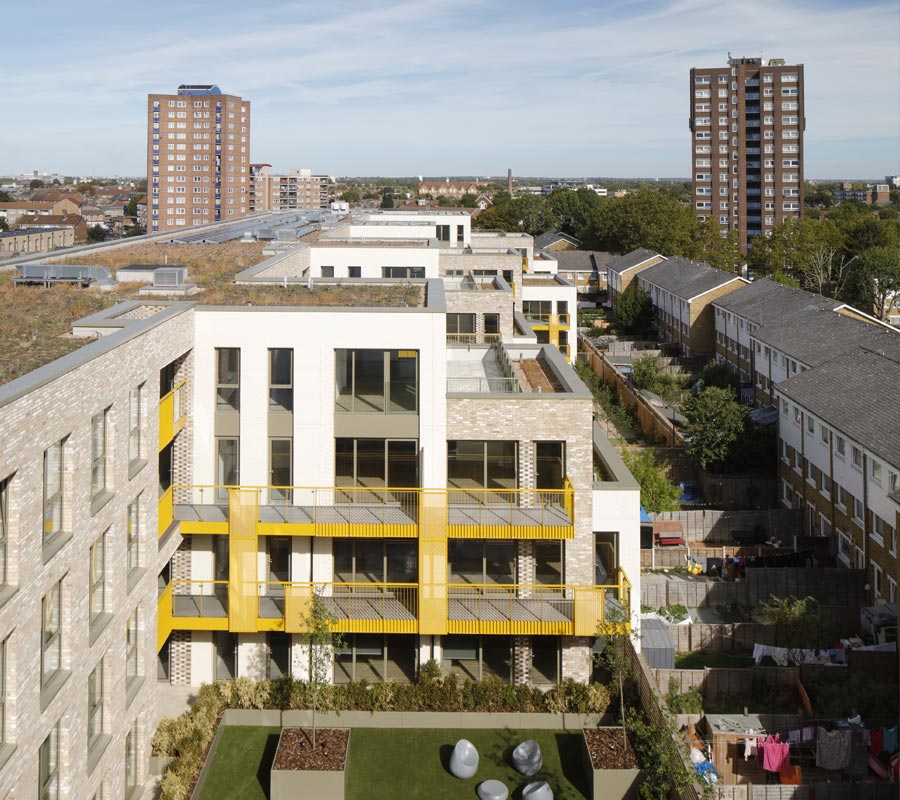Green Roofs

What are green roofs?
Green roofs have risen in popularity due mainly to the positive impacts they have on the environment. Although there seem to be numerous categories of green roofs talked about in the market, they can be broadly broken down into Intensive or Extensive systems.
Typically consisting of a drainage and water retention board, filter fleece, growing medium (substrate) and planting in the form of seeds, plug plants or pre-grown vegetative blankets.
As the green roof sector rapidly moves forward and systems continue to develop there are now many designs which could fall into both the Intensive and Extensive “category”. These types of systems could be termed as Semi-Intensive.
Green Roof Benefits
Green roofs offer many advantages for building developers, owners and their users. They benefit the wider environment through their positive impact on sustainability, biodiversity and the attenuation of storm water. They create visual enhancement of the landscape and fully exploit the spatial opportunities for visual and recreational benefit with the possibility of planning gain. In economic terms green roofs can have long term financial benefits. Combined with Solar Photovoltaic (PV) panels they can enhance the power production of the PV units due to the cooling nature of the green roof.
Sustainable Drainage
(Reducing flood risk)

Biodiversity
Green roofs can help to create new wildlife habitats within urban environments, or recreate habitats that were lost during development. The type of system chosen can be designed to provide a habitat to encourage a broad range of species to flourish. However it could also be created to support more specific species of flora or fauna for conservation purposes.
Extensive green roofs which are designed not to be trafficked and are therefore relatively undisturbed, can offer a very good habitat for plants, birds and insects. There is evidence throughout Europe, that with the right design, green roofs can encourage ground nesting birds such as lapwings, skylarks, oystercatchers and plovers.
Countering Climate Change and the Urban Heat Island Effect
During the day, heat from the sun is absorbed by the hard surfaces within a city, which is then radiated back during the night creating a hotter city microclimate. Therefore, urban temperatures are often many degrees warmer than the surrounding countryside, which can lead to a higher energy demand to cool city buildings through the night. This difference in temperature is called the urban heat island effect.
Rises in temperature can lead to increased levels of air pollution which may exacerbate health problems especially in the old, young and susceptible. However, evaporation of water from soil surfaces and the leaves of plants on a green roof create a cooling effect of the surrounding air leading to a reduction in the urban heat island effect. The many layers within a green roof system also prevent solar radiation increasing roof surface temperatures and therefore subsequently radiating any heat back at night.
Building Performance and Enhancements
Green roofs can benefit building occupants by providing valuable additional outdoor recreational areas, for a variety of possible uses, including amenity and recreation. Indeed, research suggests that such green space can improve the productivity of the workforce, reduce hospital patients’ convalescence times etc.
Amenity, Health and Wellbeing
Green roofs can benefit building occupants by providing valuable additional outdoor recreational areas, for a variety of possible uses, including amenity and recreation. Indeed, research suggests that such green space can improve the productivity of the workforce, reduce hospital patients’ convalescence times etc.
Recreational Spaces – the roof structure is able to take the weight of the proposed recreational system above it, then green roofs can play a very important role in providing useable spaces for people where there is little available at ground level. Green roofs designed as recreational areas have the advantage that access to them can be controlled making the space less prone to vandalism and other anti-social issues which can be common place in public spaces at ground level.
Aesthetics – In many locations the view looking across a series of city roofs can be very uninspiring. Green roofs, rather than hard flat roofs are not only more pleasant to the eye; they are very likely to be seen as a positive selling point for developers wishing to sell property to potential buyers.
Health – It is known that people who live in high density urban environments are less susceptible to illness if they have a balcony or terrace garden. This is due to a number of associated benefits such as more oxygen, better air filtration and humidity control which plants can supply. There are also therapeutic benefits associated with the mixture of smells, colours, sounds and movement created by plants and their associated fauna, which can reduce stress, lower blood pressure, relieve muscle tension and increase positive feelings.
Financial
Energy Savings – Reduction of Solar Heat Ingress – Although the addition of a green roof cannot as yet be quantified to influence the thickness of insulation required for a building, its thermal mass can reduce the amount of solar heat entering a building through the roof. This is more pronounced when the building is poorly insulated. The various layers within a green roof system help to absorb the heat of the sun, reducing its transmission into the building below. This in turn reduces the air-conditioning costs required to keep the temperature at a suitable level.
Longevity of Roofing Membranes – Ultraviolet radiation falling upon certain waterproofing membranes can change its characteristics and accelerate the aging process. However, as the membrane is buried below the green roof system, this premature ageing cannot take place.
During the day an unprotected membrane heats up, and releases that heat back to the atmosphere during the night. This daily fluctuation of temperature causes the membrane to expand and contract which over time creates stresses within the membrane affecting its long-term performance. During the summer months exposed membranes could reach 50-60ºC, and in winter, temperatures below freezing. A green roof acts as a buffer and reduces the severity of maximum and minimum temperatures, thereby extending the life of the membrane.
Policy/Planning Consent
Some council’s and local authorities, e.g. the London boroughs have stated that they expect green roofs to be designed for new developments, where feasible. Other regions throughout the UK are now moving towards implementing similar policies.
Improvement of Air and Water Quality
Water Quality – Vegetation can filter out airborne particulates as the air passes over the plants, settling on leaves and stems. These particles are then washed down into the growing substrate via natural rainfall or irrigation. They are then held within the green roof substrates / filter fleeces and prevented getting into water courses. Heavy metals such as lead, zinc and copper are recognised pollutants within urban areas, but green roofs play a major role in limiting their potential to contaminate water supplies.
Quieter Buildings
Hard roof surfaces tend to reflect sound, rather than absorb it. Green roofs absorb sound through the substrate, drainage and vegetation layers. This is especially significant in busy locations such as built up areas, near airports or flight paths and alongside busy roads. Buildings such as schools, hospitals and offices could benefit from the noise reduction properties of green roofs
Food Production
Green roofs can provide new opportunities for urban agriculture; however, they need to be specifically designed for this application and require significant nutrition. There can be many benefits associated with growing and distributing food locally including:
- Support of the local economy in growing, processing and distributing;
- Increased access to food by everyone
- Fresher produce
- Decreased travel time to market and related environmental costs
- Localised control of fertiliser and pesticides
Green Roofs and Solar Power
Photovoltaic (PV) panels work more efficiently at a set operating temperature. Once there is a deviation either above or below this level, the electricity generation becomes less efficient. As a green roof is able to maintain a more constant temperature regime with less daily fluctuations, the PV panels are able to work more efficiently throughout the day.
Green Roofs and BREEAM
BREEAM – Building Research Establishment’s Environmental Assessment Method is an assessment method based on performance to set standards for best practice in sustainable design. Credits are awarded in 10 categories and then added together to produce a single overall score which is then given a rating of Unclassified, Pass, Good, Very Good, Excellent or Outstanding.
Green roof installation in general can directly assist in getting credits in the following categories:
- POL5: FLOOD RISK – To encourage development in low flood risk areas or to take measures to reduce the impact of flooding on buildings in areas with a medium or high risk of flooding.
- LE4: MITIGATING ECOLOGICAL IMPACT – To minimise the impact of a building development on existing site ecology
- LE5: ENHANCING SITE ECOLOGY – To recognise and encourage actions taken to maintain and enhance the ecological value of the site as a result of development.
- LE6: LONG TERM IMPACT ON BIODIVERSITY – To minimise the long term impact of the development on the site’s and surrounding area’s biodiversity. Green roofs can also have a more indirect impact on other sections of BREEAM.
Green Roof Standards
There are currently no British Standards covering the design or installation of green roofs, hence the creation of the GRO Code of Best Practice which is referred to by the British Board of Agrément (BBA) in all green roof related certification.
There is however a British Standard substrate testing – not to be confused with substrate certification. BS8616:2019 Specification for performance parameters and test methods for green roof substrates is the first UK BS standard related specially to green roof substrates. It predominantly provides a unified set of test methods which should be used to test green roof substrates in the UK. This allows results from different laboratories to be accurately compared. Recommended target values of parameters are also given, although these are not standards and not all substrates are expected to confirm, especially for non-standard products or installations.
Fire Performance on Green Roofs
Building Regulations Approved Document B volumes 1 and 2 contain no specific test requirements for green roof constructions. Instead they refer to the DCLG publication Fire Performance of Green Roofs and Walls dated August 2013, download a copy here
GRO has also produced its own guidance to assist designers minimise fire risk on green roofs, download a copy here
